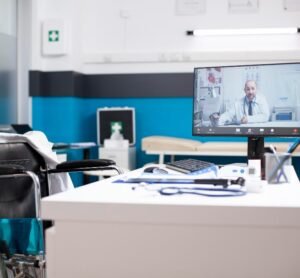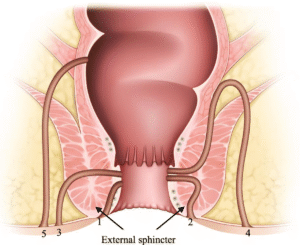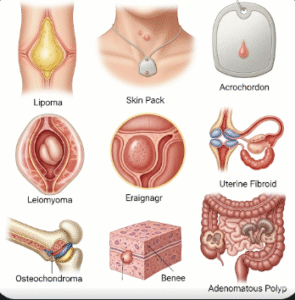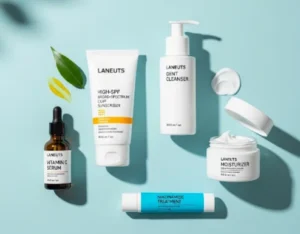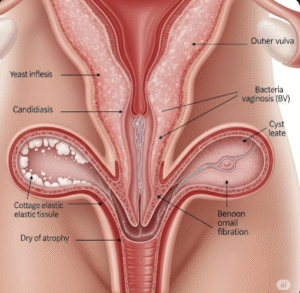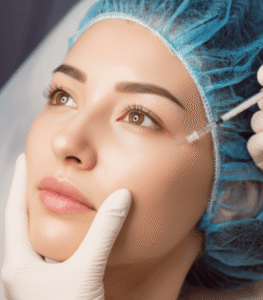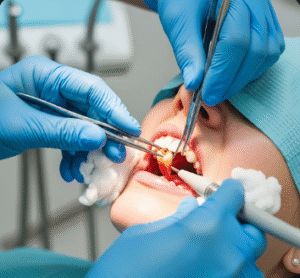What it is
Iontophoresis therapy is a non-surgical treatment for hyperhidrosis (excessive sweating) that uses a mild electrical current to temporarily disable overactive sweat glands.
The therapy involves placing hands, feet, or sometimes underarms in shallow trays of tap water (or with medicated solutions), while a controlled electric current passes through. This process blocks sweat ducts and reduces excessive perspiration.
💡 In Korea, iontophoresis is a widely used, cost-effective, and safe therapy for palmar (hands), plantar (feet), and axillary (underarm) hyperhidrosis. It is often a first-line treatment before moving on to Botox injections, microwave therapy, or surgery.
Why it’s done
Iontophoresis therapy is done to control sweating without invasive procedures or systemic medications.
✔ To provide non-invasive, drug-free relief for hyperhidrosis
✔ To improve daily activities (writing, holding objects, using devices)
✔ To reduce foot odor, fungal infections, and blisters
✔ To avoid side effects from oral medications like dry mouth or dizziness
✔ To serve as a maintenance therapy after Botox or other procedures
✔ To offer an affordable option compared to surgery or microwave treatments
In Korea, it is especially popular with students, office workers, and professionals, since it fits easily into regular schedules and doesn’t require hospitalization.
Alternatives
Other treatments available if iontophoresis isn’t suitable:
➡️ Topical antiperspirants – Aluminum chloride creams/sprays.
➡️ Botox injections – Effective for hands, feet, underarms (lasts 4–6 months).
➡️ MiraDry (microwave therapy) – Permanent sweat gland destruction (mainly for underarms).
➡️ Oral anticholinergics – Reduce sweating but may have systemic side effects.
➡️ Surgical sympathectomy – For severe resistant hyperhidrosis, though riskier.
➡️ K-beauty herbal remedies – Traditional soaks with mugwort, green tea, or ginseng.
Preparation
Before iontophoresis therapy in Korea:
- 🔹 Consultation & diagnosis → Confirm hyperhidrosis type (primary vs. secondary).
- 🔹 Skin check → Ensure no open wounds, eczema, or fungal infections on hands/feet.
- 🔹 Stop creams/lotions → Patients avoid applying moisturizer or antiperspirants before sessions.
- 🔹 Remove jewelry → To prevent irritation during electrical current flow.
- 🔹 Hydration → Staying hydrated helps improve skin conductivity.
How it’s Done
The iontophoresis procedure is straightforward and takes place in dermatology clinics or at home with devices:
- Setup → Shallow trays filled with tap water, sometimes with anticholinergic solutions (like glycopyrrolate) for stronger results.
- Placement → Hands or feet submerged; for underarms, pads or sponges are applied.
- Current application → A mild, safe electrical current (10–20 mA) passes through for 20–30 minutes.
- Adjustments → Current is gradually increased to a comfortable level.
- Completion → Patients dry off and may apply a soothing cream.
📅 Treatment schedule:
- Initial phase: 3–4 sessions per week for 2–4 weeks.
- Maintenance: Once every 1–2 weeks as needed.
💡 Korean clinics often enhance the session with cooling masks, herbal sprays, or moisturizing essences to reduce dryness and irritation.
Recovery
Recovery from iontophoresis therapy is minimal:
➡️ No downtime – Patients can resume normal activities immediately.
➡️ Mild dryness/irritation – Common side effect, improved with moisturizers.
➡️ Effect timeline –
- Noticeable reduction after 5–10 sessions
- Best results after 2–4 weeks
- Maintenance needed to sustain dryness
In Korea, clinics often supply moisturizing hand/foot creams as part of the aftercare routine.
Complications
Iontophoresis is very safe, but minor issues can occur:
⚠ Possible side effects include:
- Skin dryness or irritation
- Mild redness or tingling
- Tiny blisters (vesicles) in rare cases
- Discomfort if current is too strong
Contraindications:
- Pacemakers or implanted electrical devices
- Pregnancy (precautionary)
- Metal implants near treated area
- Open cuts or wounds on skin
Korean clinics minimize risks by carefully adjusting current and monitoring skin condition.
Treatment Options in Korea
Korea offers advanced iontophoresis programs in hospitals, dermatology clinics, and even home-use devices recommended by specialists.
🇰🇷 Popular Korean Options:
- Clinic-based iontophoresis → supervised sessions with dermatologists.
- Home-use machines → FDA/CE-approved devices available through Korean suppliers.
- Enhanced iontophoresis → Combined with medicated solutions (glycopyrrolate).
- Integrated scalp & body programs → Hyperhidrosis care combined with skin-calming therapies.
✅ Final Thoughts
Iontophoresis therapy in Korea is a safe, effective, and affordable treatment for patients suffering from hand, foot, or underarm hyperhidrosis. With minimal side effects and no downtime, it offers an excellent alternative to Botox or surgery, especially for those seeking drug-free, non-invasive options.
Korean clinics further enhance the experience with K-beauty-style aftercare, combining moisturizers, herbal treatments, and stress management to maintain results. This holistic approach makes Korea a top destination for hyperhidrosis management, helping patients achieve both comfort and confidence in daily life.


